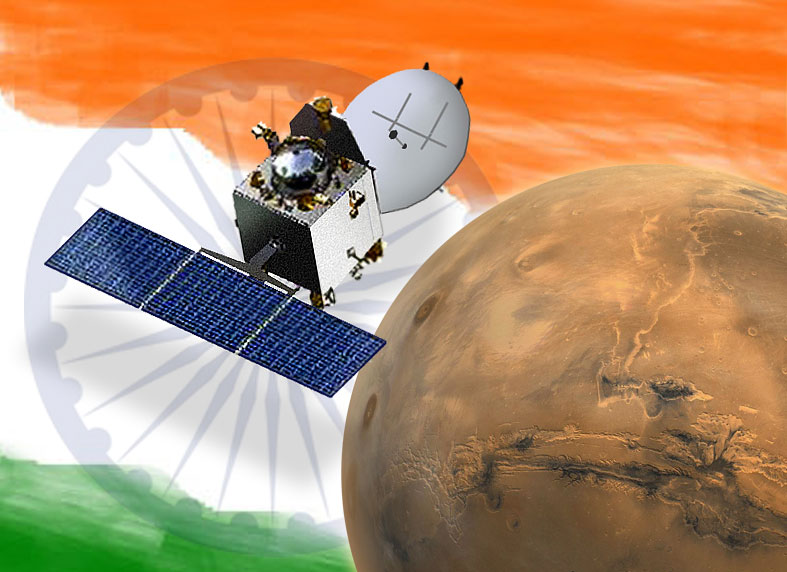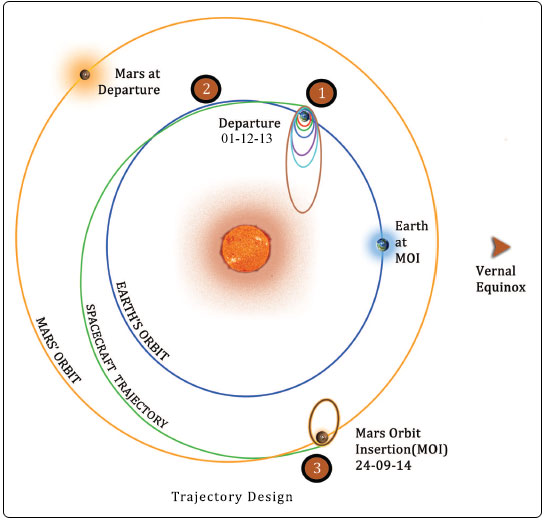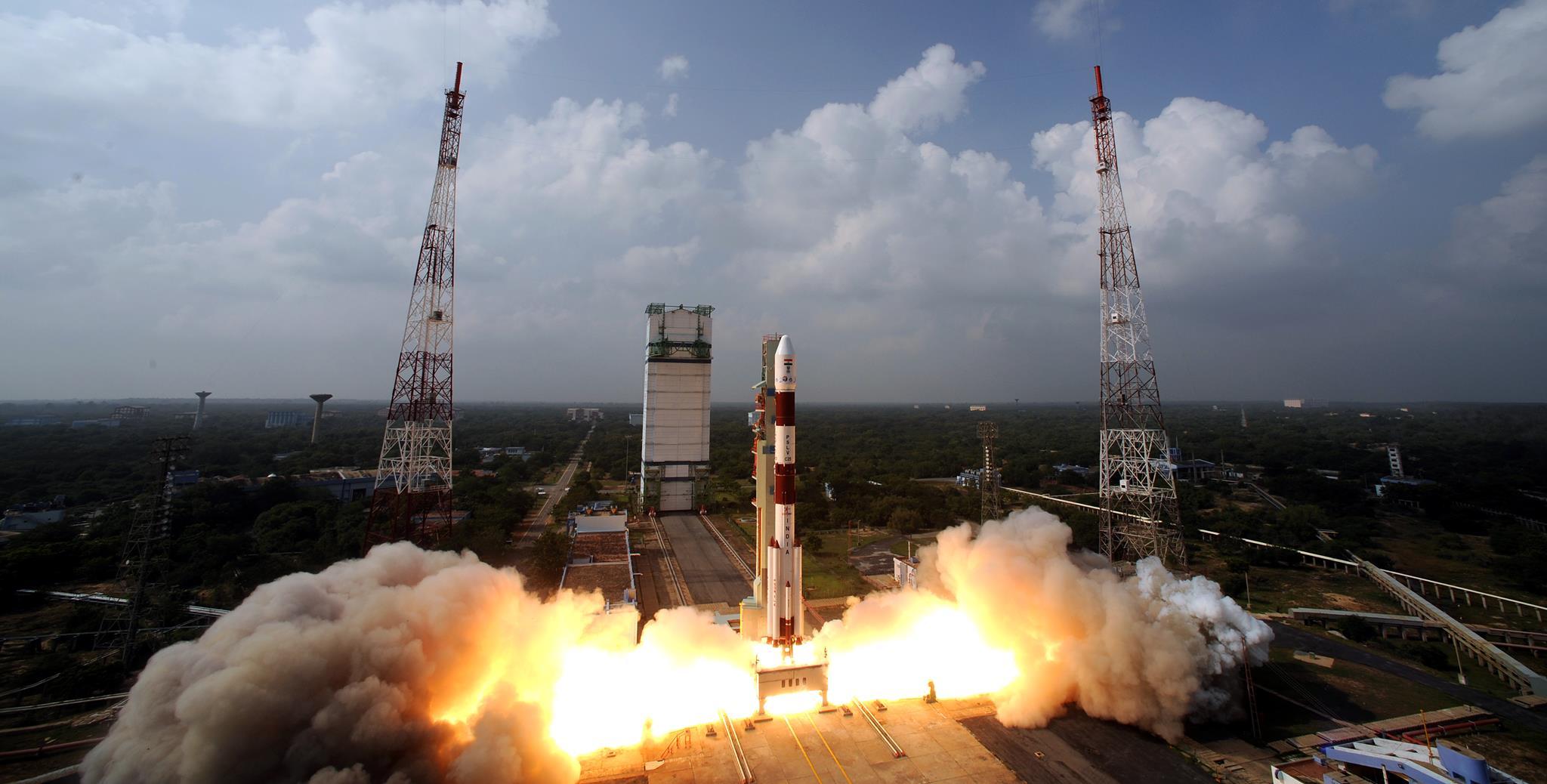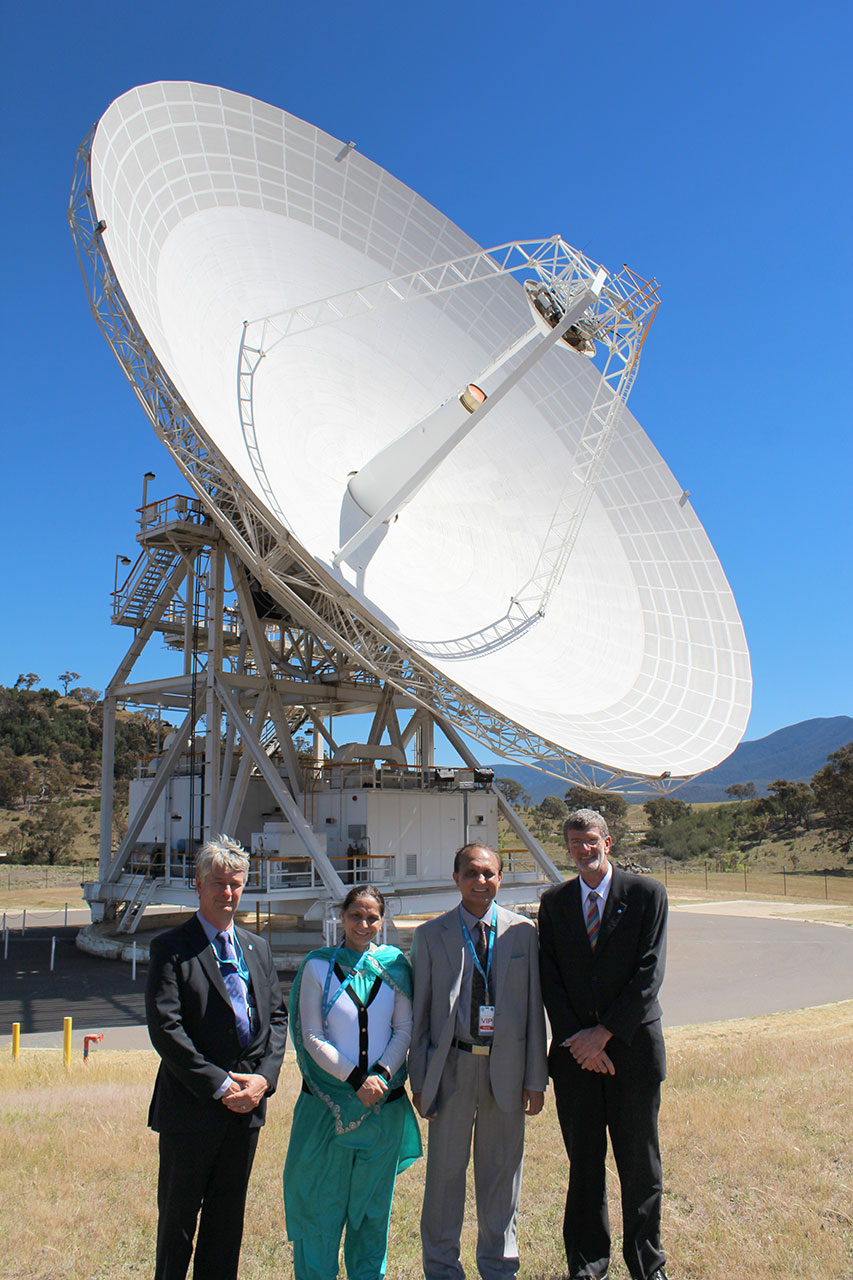The Indian space agency’s MOM (Mars Orbiter Mission) spacecraft. Image: ISRO/Astro0
India launches its first mission to Mars
On November 5, 2013, the Indian Space Research Organisation (ISRO) successfully launched its ambitious mission to the red planet. Primarily a technology ‘proving’ mission, Mangalayaan ‘Mars craft’ (also known as MoM – Mars Orbiter Mission) will conduct some science utilising indigenous scientific instruments, to study Mars surface features, the Martian atmosphere and the morphology and mineralogy of the planet.
One of the main objectives of the first Indian spacecraft to go to Mars is to develop the technologies required for design, planning, management and operations of an interplanetary mission. The technological objectives include the: Design and realisation of a Mars orbiter with a capability to survive and perform Earth bound manoeuvres, cruise phase of 300 days, Mars orbit insertion/capture, and on-orbit phase around Mars; Deep space communication, navigation, mission planning and management; and incorporate autonomous features to handle contingency situations.
The journey to Mars: diagram showing the planned mission of the Mangalayaan spacecraft. Image: ISRO
The spacecraft will spend nearly a month in Earth orbit, using its main rocket engine plus Earth gravitational assists to increase its altitude and speed. On December 1, 2013 it will fire its main engine, leaving the Earth behind and heading to Mars. If all goes well, the spacecraft will arrive in Martian orbit on September 24, 2014.
Australian Connection
The Mangalayann or Mars Orbiter Mission is being supported by the antennas of NASA’s Deep Space Network, including the Canberra Deep Space Communication Complex (CDSCC), which is managed on NASA’s behalf by CSIRO Astronomy and Space Science (CASS).
ISRO’s PSLV rocket lifts off from the Satish Dhawan Space Centre. Image: ISRO
CDSCC began tracking operations just a few hours after the spacecraft’s picture perfect launch. There to witness the tracking operations was India’s Deputy High Commissioner to Australia, Mr Surinder Kumar Datta, as well as CASS Chief, Dr Lewis Ball. Hosted by CDSCC Director, Dr Ed Kruzins, and accompanied by the Deputy High Commissioner’s wife Sunita, the group toured the tracking station and operations centre while it was in two-way radio contact with the Mangalayaan mission.
Dr Ed Kruzins, Mrs Sunita Datta, Mr Surinder K Datta and Dr Lewis Ball pose with Deep Space Station 45 as it was in contact with India’s Mars mission.
CDSCC will continue to provide radio contact with the spacecraft throughout its journey including the orbital phase at Mars. Mangalayaan will join NASA’s MAVEN spacecraft, also due to arrive in September 2014. They will add to the other five active missions currently at Mars including NASA’s Opportunity and Curiosity rovers.
More information on ISRO’s Mars mission can be found on the MoM website.





